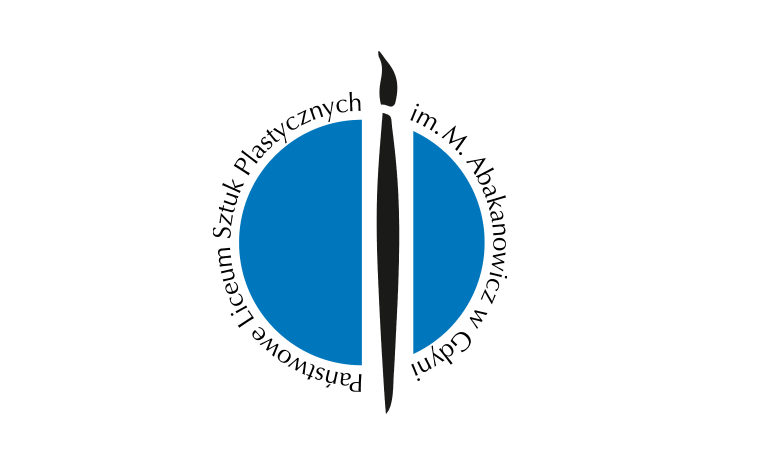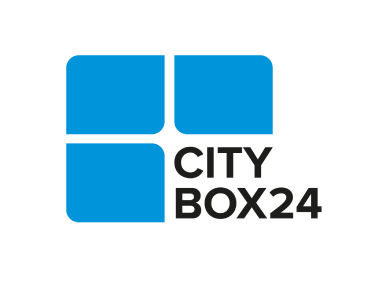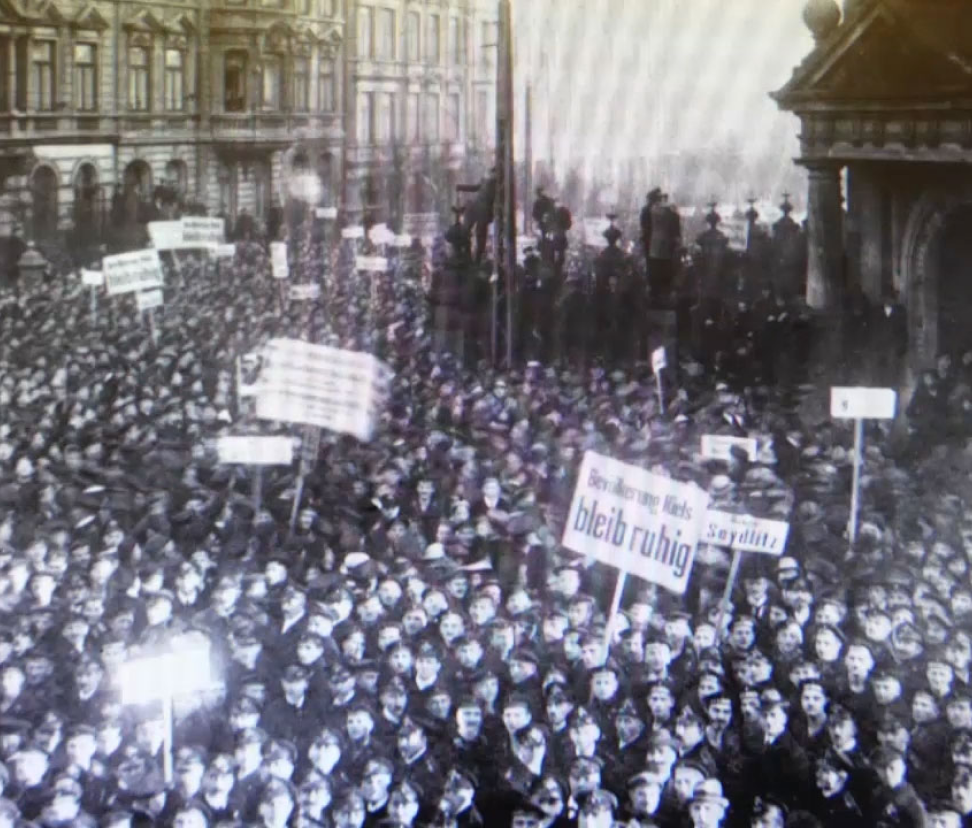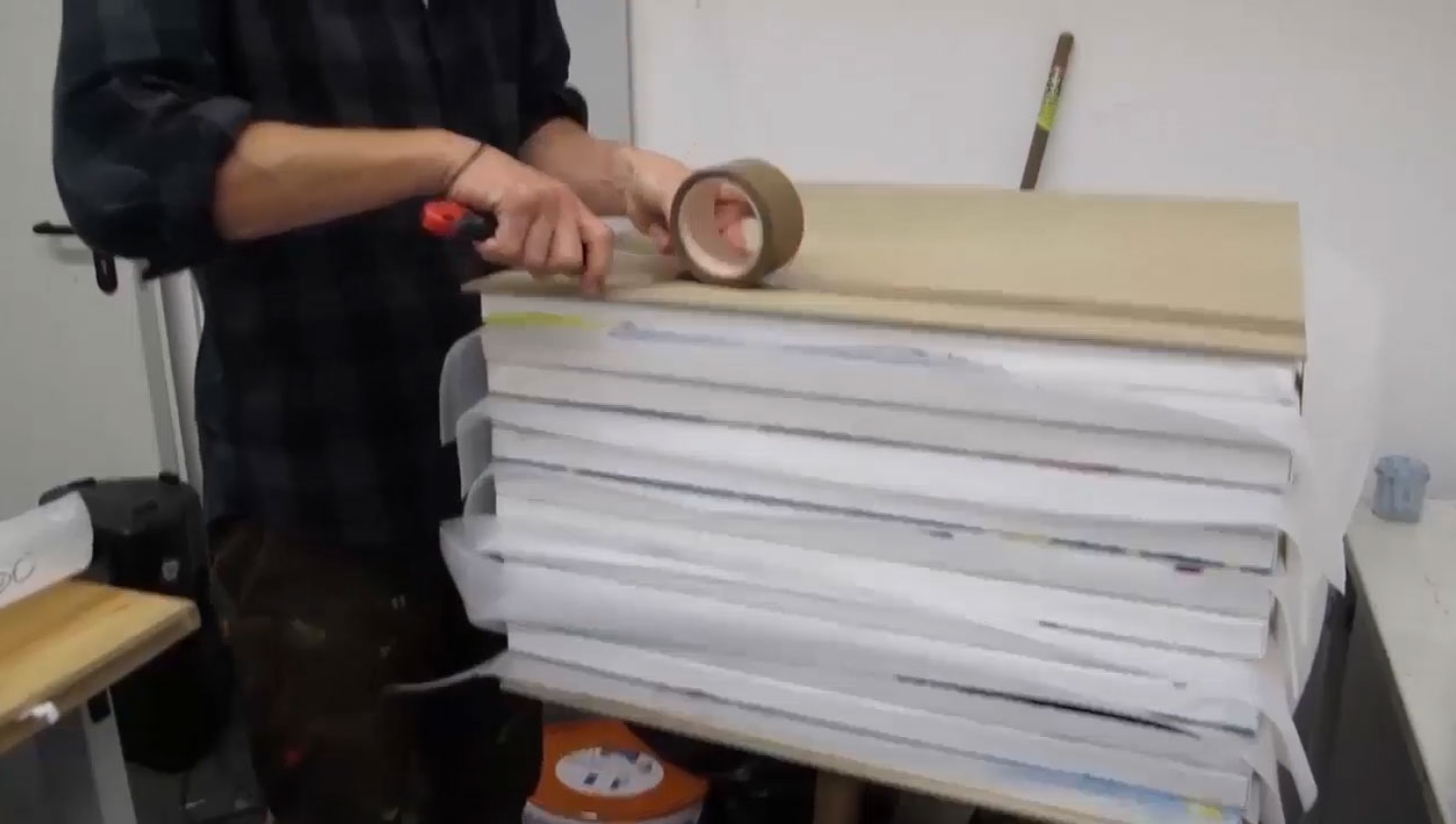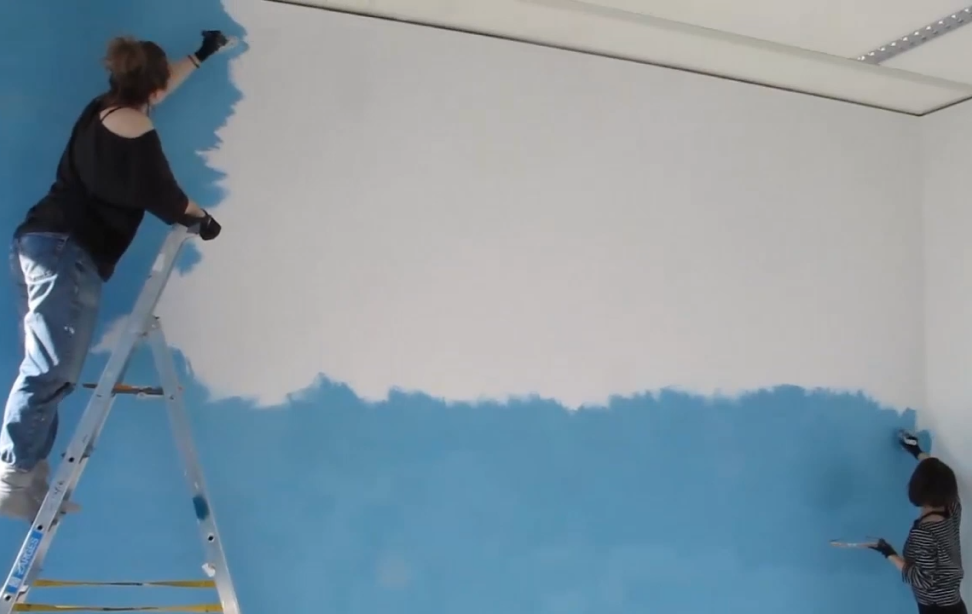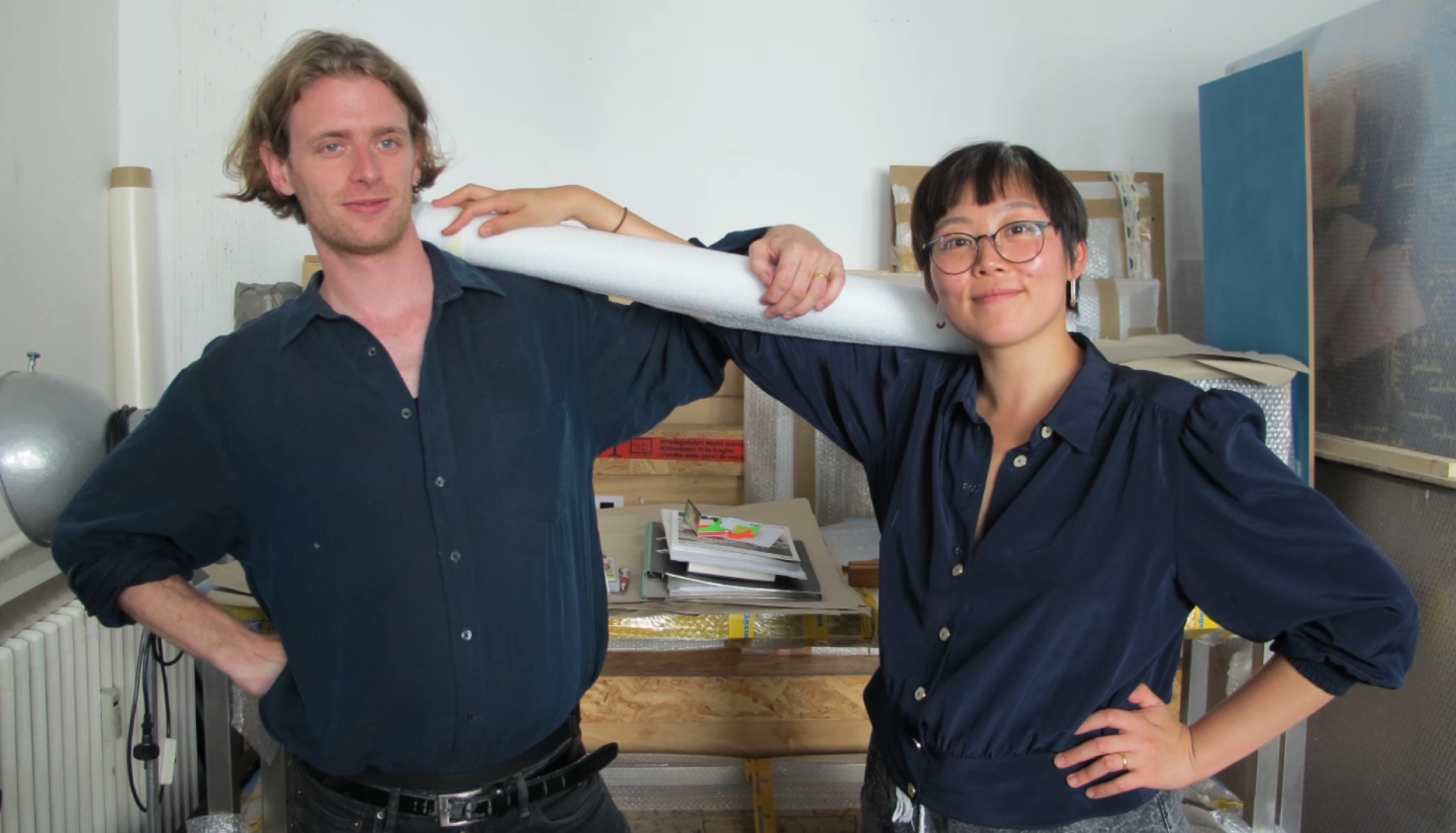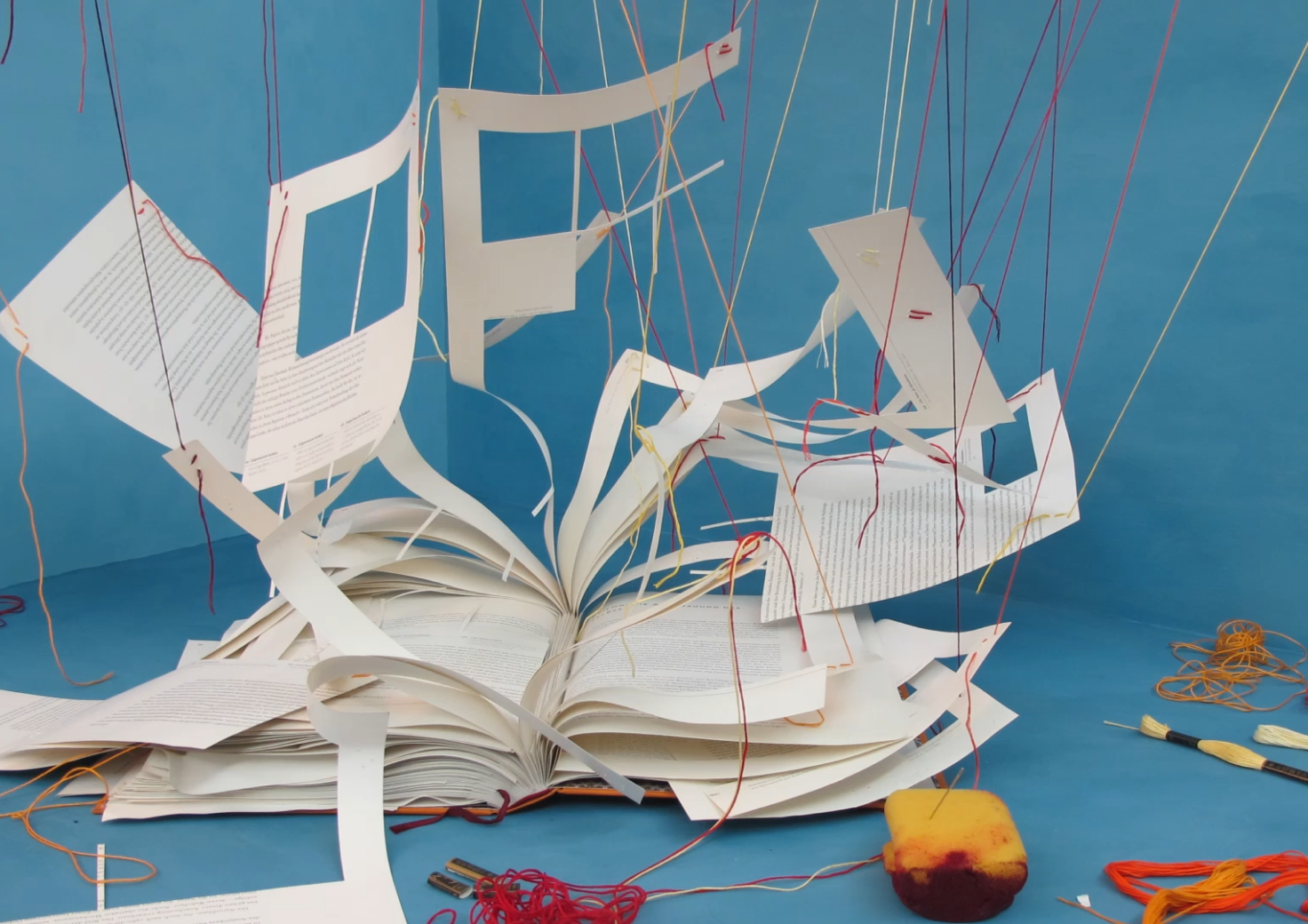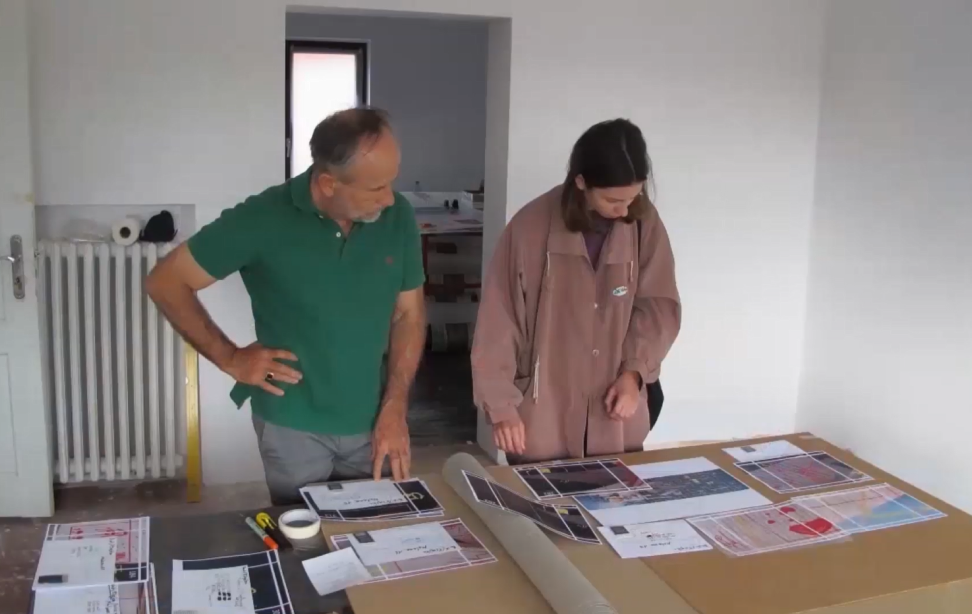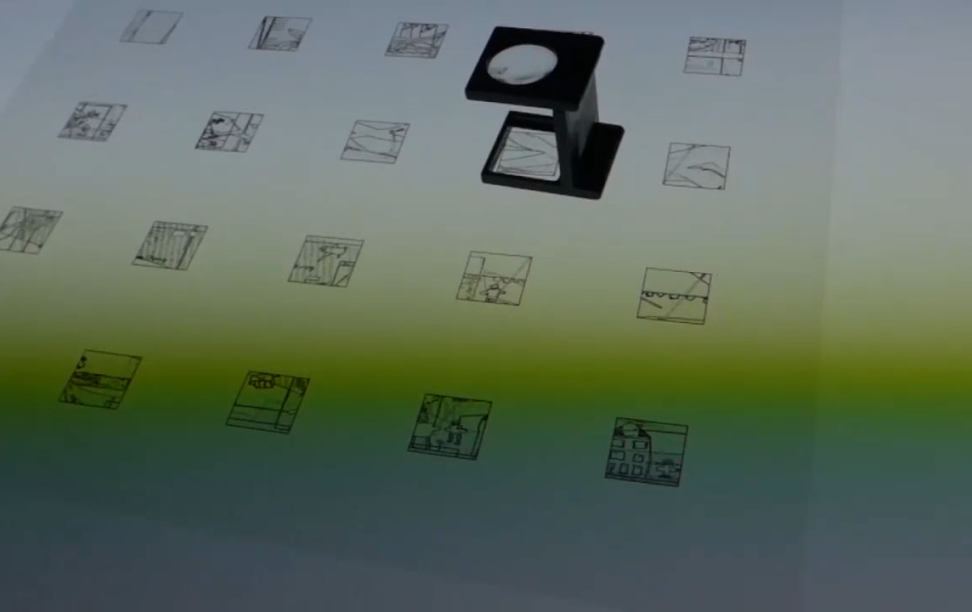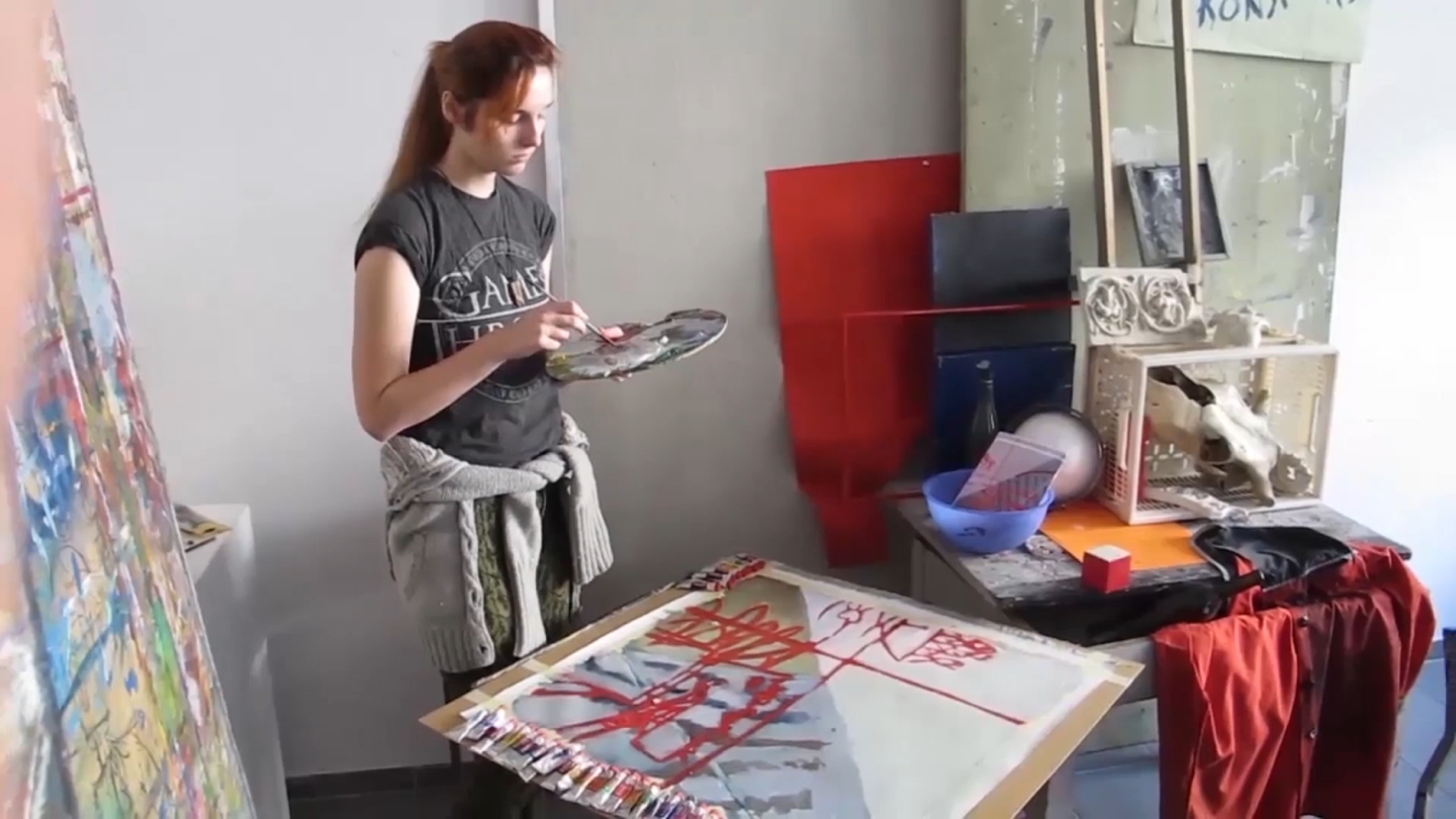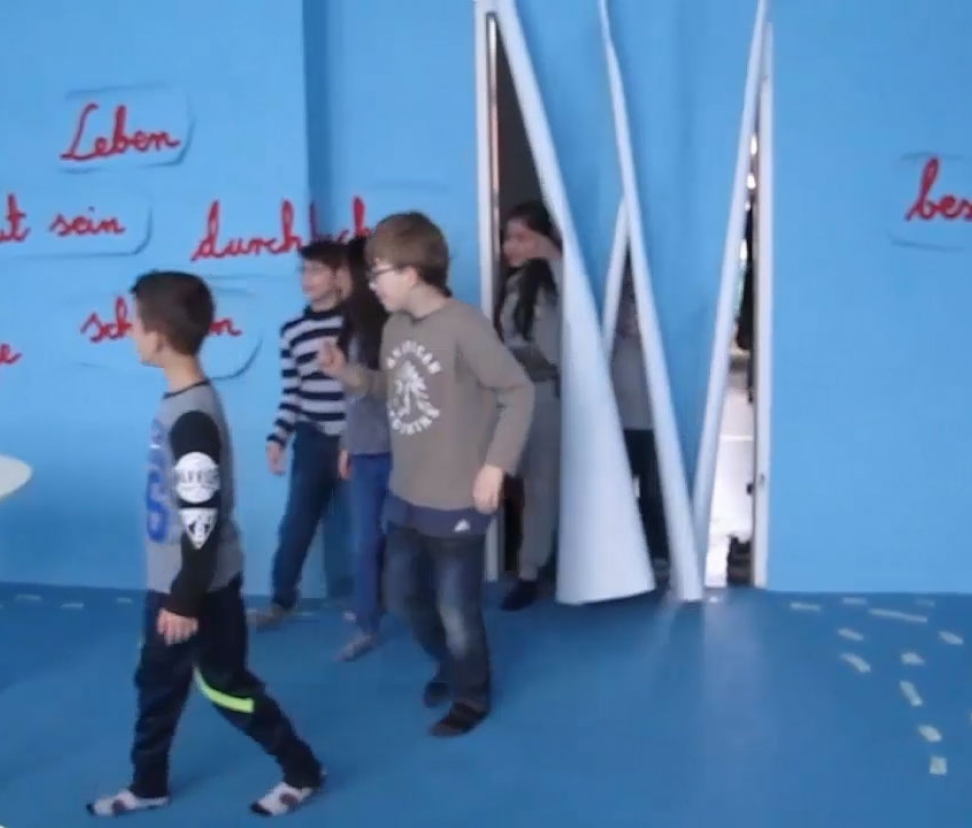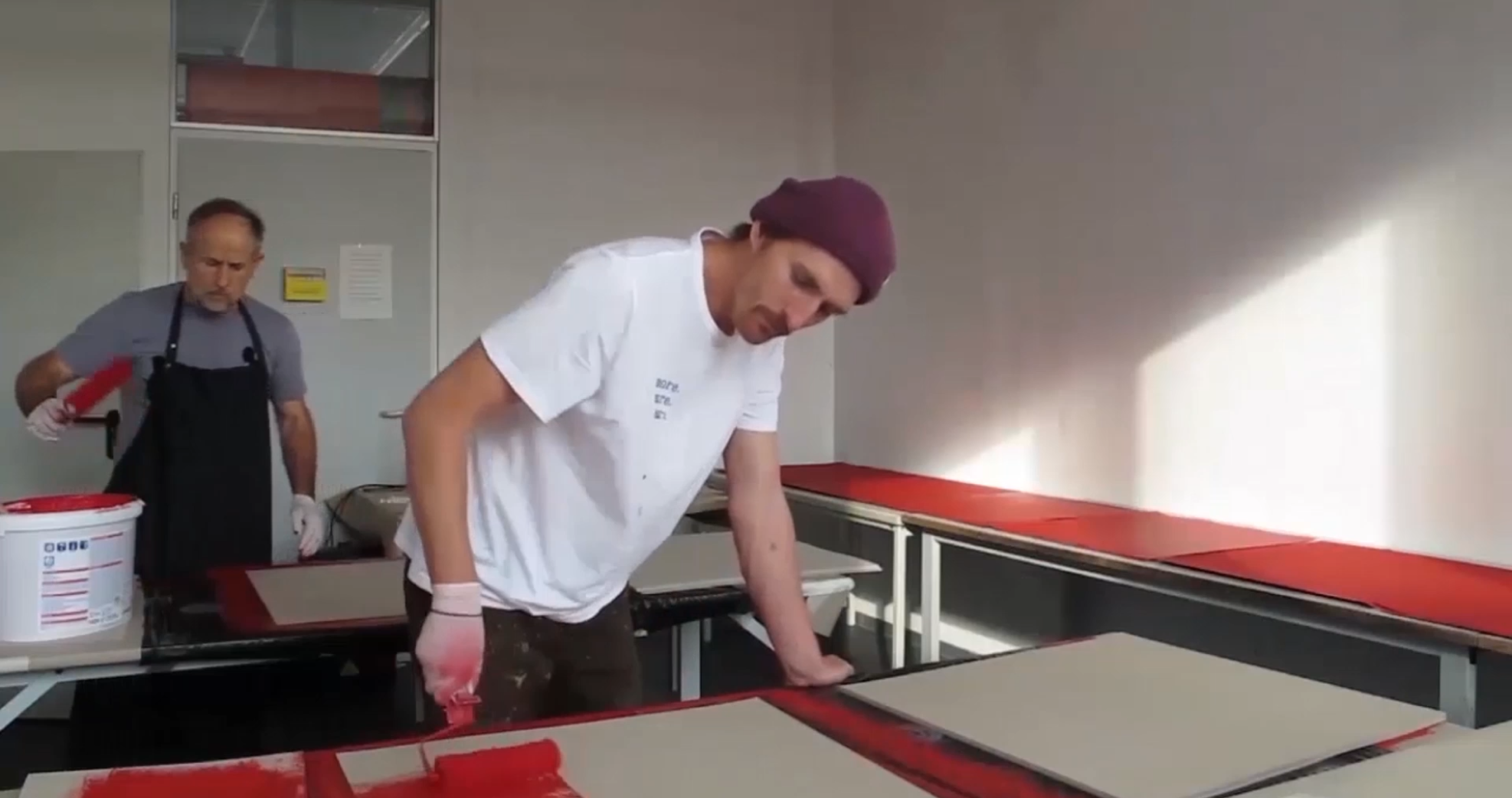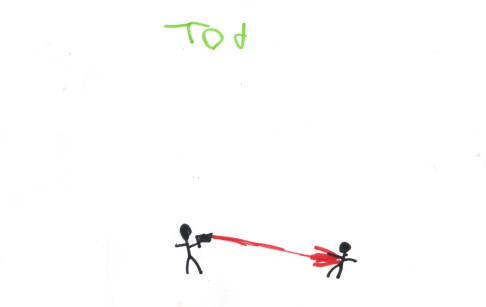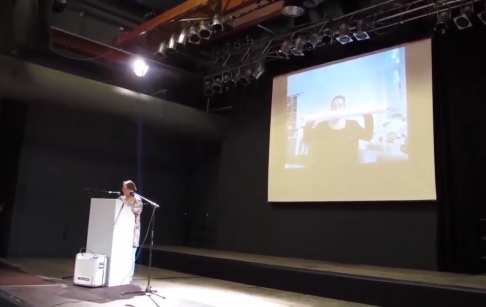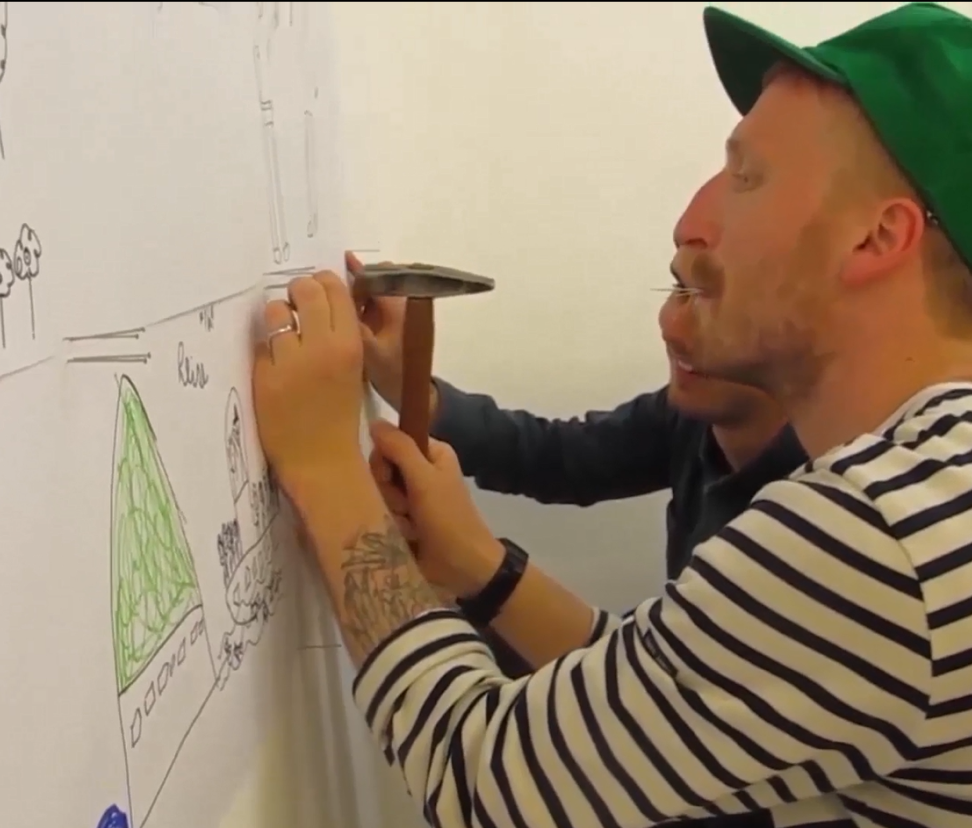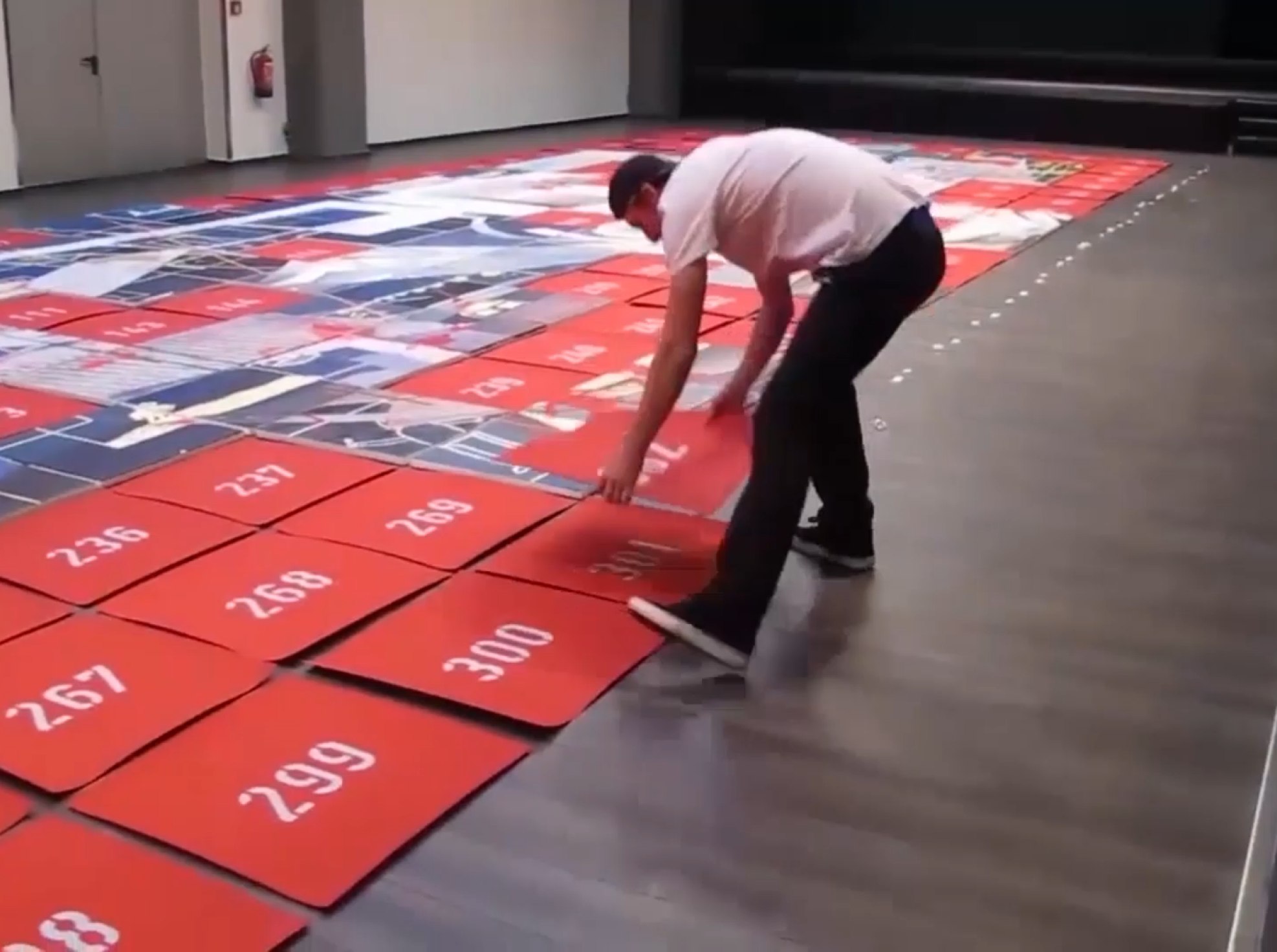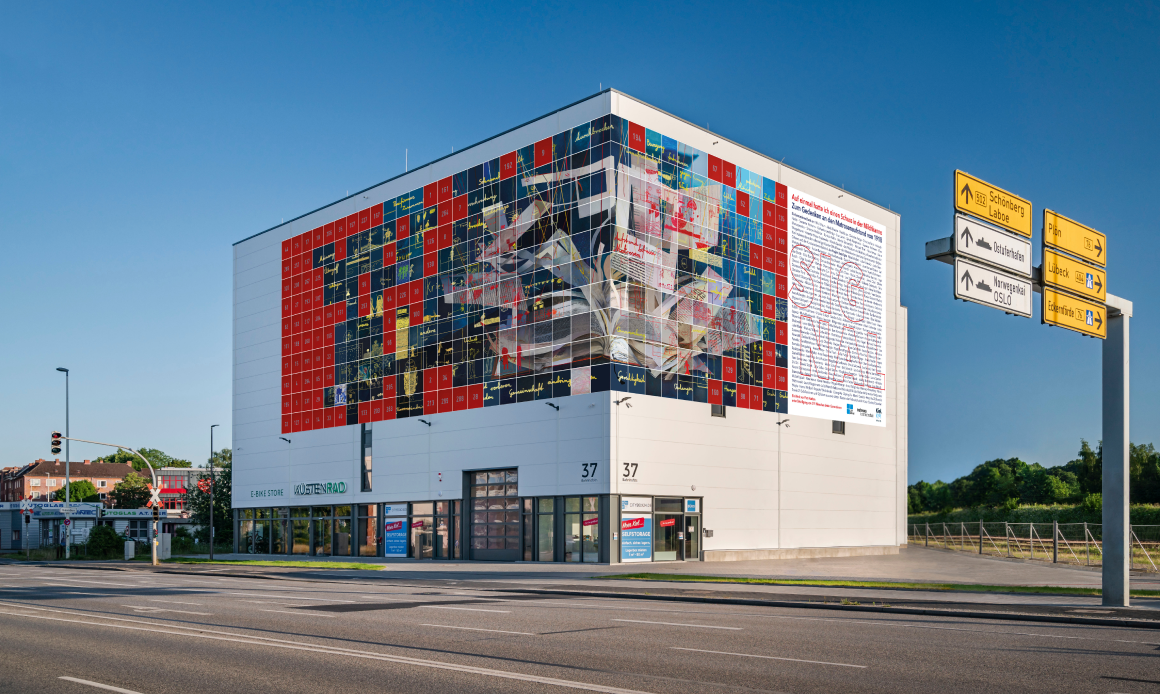
[ Bilder-Demo ]
»BilderDemo« through Kiel city centre on 9 November 2014
A demonstration is planned for 9 November where prints of the paintings (not the originals due to the weather) will be carried through the city to the Rathausplatz square. Several events are planned there, such as live music, the reading aloud of literary texts etc.
The »Bilderdemo« (picture demonstration) is dedicated primarily to commemorating the sailors’ mutiny of 1918 and is intended to bring the issue to the attention of people who have not previously been aware of it. Attention will also be drawn to the presentation of the paintings at the city hall the next day.

Presentation of Paintings and Their Sale for a Good Cause in the Kiel City Hall (Council Chamber) Afterwards
The original paintings will be exhibited for one day in the council chamber and adjoining rooms of the city hall. The exhibition will honour the achievements of the creators of the paintings. Although they were created based on templates, the paintings express a strong individual artistic voice.
Sales should be solely on the basis of the interest of the buyer in a particular painting. Therefore, the paintings will be sold anonymously, without any attention being paid to how well-known the creator is. The buyers will learn the name of the creator of their painting later. The paintings can be bought from this website.
Although it will not be visible on the building forever, the facade mural commemorating the sailors’ mutiny will continue to be seen in its new form: in fragments, on the private walls of citizens and institutions.
The sales proceeds will benefit the ZEIK in Kiel-Gaarden, the Zentrum für Empowerment und interkulturelle Kreativität (Center for Empowerment and Intercultural Creativity).

[ All of a sudden there was a shot in my milk jug ]
Art in the public sphere in commemoration of the sailors’ mutiny of 1918 im
An artwork by Piotr Nathan with the direct creative involvement of over 200 people, primarily living in Germany and Poland, from three generations – including students and teachers at the Muthesius University of Fine Arts and Design in Kiel, the Academy of Fine Arts in Gdańsk and pupils at the art high school in Gdynia- Orłowo and the Fröbelschule primary school in Kiel.

About the design of the work
The title of the artwork is taken from an archive interview with an eye witness to the sailors’ mutiny. As an adult he spoke about his experiences of the mutiny as a four-year-old boy:
»I was meant to go and get some milk. All of a sudden, there was a shot in my milk jug. I ran off crying, and a soldier picked me up and took me home«.
A central element of the design of the facade is a book with open pages, a symbol of knowledge. The individual pages are pulled upwards by threads and seem to float in the air - a visibly fragile construction. Numerous images from the book have been removed and cut out, symbolising the creation of places where new things can take place: places of free development, and ultimately our democratic system.
Children were also involved in the artistic creation of and intellectual preparation for the facade design. 31 third-year pupils from the Fröbelschule primary school in Kiel’s Gaarden district took part in a multi-day workshop. The focus of this event was putting into graphic form the meaning of words and phrases associated with the sailors’ mutiny. The children’s interpretative drawings and selected handwritten phrases were integrated into the iconography of the design in a collage-like way. They make up the second key element of the design.

About the implantation of the work
The design was divided into square areas of equal size and then passed on to be creatively painted. Some fragments were sent beyond the borders of Germany to neighbouring Poland, to the deliberately-chosen Tricity area on the Baltic Sea, consisting of the cities of Gdańsk, Sopot and Gdynia. Gdańsk is where the trade union Solidarity emerged from a strike movement in 1980 and played a decisive role in the revolution and reform of 1989. The invitation to Polish citizens from this region was therefore also aimed at promoting international understanding.
Paintings were created with over 200 participants, including some well-known artists. These paintings, on which the final result – the printed panels on the facade – were based, will now be the focus of the commemorative event this November.

Historical context
The Kiel sailor’s mutiny of 1918 was a key event leading to the November revolution and the foundation of the Weimar Republic. Sparked by the refusal of the sailors to take part in a hopeless battle against the British fleet, the uprising quickly developed into a nationwide movement. Sailors and workers demanded peace, better living conditions and democratic reforms, resulting in the end of the monarchy and the beginnings of German democracy. This mutiny and the Solidarność movement in Gdańsk both involved resistance to autocratic regimes. Both had a lasting impact on the political landscape of their countries and symbolise the fight against oppression and for freedom.
Nathan, who was born in Gdańsk and works in Kiel, combines the parallel aspects of these movements in his work. The Kiel sailors’ mutiny contributed to the end of the First World War, while Solidarnośc accelerated the fall of Communism in Eastern Europe. Both events are international symbols of the successful resistance of citizens against authoritarian systems and demonstrate the importance of collective action.
Today, at a time when populist forces are gathering strength across the globe, Nathan’s work »All of a sudden there was a shot in my milk jug« is highly topical. Originally created for the 100th anniversary of the sailors’ mutiny, this collaborative work became an artistic and democrative process. It is a call to vigilance and for the protection of democracy. Purchasing a piece of this artwork also supports a good cause.

[ Thanks to ]
Special Thanks to:
Alvar Bohrmann, Nicci Braun, Jakob Braune, Fred Bruss, Jimok Choi, Ute Diez, Christian Feege, Christine Fenzl, Florian Grebert, Helmuth Hanle, Adrian Herzig, Susanne Homann, Katharina Jesdinsky, Lisa Jurek, Sylwia Kasprowicz, Susanne Kollmann, Peter Kruska, the Art Advisory Board of the City of Kiel, Ewa Manuszewska, Simeon Melchior, Gerda Ruge, Anders Prey, Detlev Pusch, Arne Rautenberg, Martin Schoenfeld, Michael Thiel, Nina Venus, David Wassermann, Annette Wiese-Krukowska, Cora Wiggers, Marcin Zawicki, the Executive Board of the Muthesius University of Fine Arts and Design in Kiel, in memory of former Chancellor Dirk Mirow, as well as the contributors from the art high schools in Gdynia-Orłowo and Grudziądz, the Academy of Fine Arts in Gdańsk, and the Fröbel School in Kiel-Gaarden.

Artists:
Natalia Adam, Julia Alkiewicz, Justin Baer, Martyna Baranowicz, Ruslan Barsegian, Monika Bartosiak, David Salazar Bianchi, Juan Manuel Blanco, Jan Błażejowski, Bartosz Błędowski, Jakob Leon Bockhardt, Jakub Bogucki, Myrtha Bohrmann, Alvar Bohrmann, Lisa Bootz, Eiko Borcherding, Dorota Borowska, Maxim Brandt, Jakob Braune, Marcelina Bucholc, Inga Busch, Olga Byvsheva, Martyna Charczyńska, Ying-Chih Chen, Maciej Chodziński, Jimok Choi, Oliwia Choroś, Katarzyna Cur, Anna Czarnota, Ute Diez, Wiktoria Dobrzycka, Sára Domeracka, Natalia Dopkoska, Anna Drywa, Żaneta Dziadosz, Sina Eichhorst, Clara Engel, Alexander Faber, Christine Fenzl, Maximilian Flachsenberg, Nicolas Freitag, Karolina Futyma, Oliwia Gapinska, Vera Gereke, Krzysztof Gliszczyński, Julia Goerke, Elżbieta Golińska, Sylwia Gorlik, Wiktoria Górnik, Florian Grebert, Paulina Grudzieńska, Nikola Grunka, Johann Haberlach, Helmuth Hanle, Franziska Heims, Jan Henrik, Aleksandra Hiller, Adele + Alberta Horstmann, Nhu Huynh, Wojcech Jachniewicz, Katharina Jesdinsky, Lisa Jurek, Kaja Juszczenko, Christian Kaesler, Karolina Kaiser, Alicja Kajtanowska, Anna Kalwajtys, Joanna Karaś, Amelia Karpińska, Gerd Kleine-Bley, Julia Klim, Antoni Klimko, Kamila Kmiecik, Migiwa Kobayashi, Maciej Kołodziej, Marta Koniarska, Julia Koprowska, Julia Kostieriewa, Eliza Kotlarek, Zuzanna Kozak, Marta Krasowska, Dominika Krechowicz, Peer Kringiel, Lea Kringiel, Käthe Kruse, Aneta Kublik, Judith Kuhlmann, Urszula Kulczyk, Sandra Kulisz, Aleksandra (Ola) Kurkierewicz, Adam Kurłowice, Jakub Łapacz, Michał Laskowski, Małgorzata Latoch, Dominik Lejman, Marianna Lewandowska, Weronika Lilla, Marta Lipiec Botkiewicz, Attila Richard Lukacs, Katarzyna Łygońska, Antje Majewski, Adam Makowski, Laura Małecka, Filip Maliszewski, Ewa Manuszewska, Weronika Markwart, Aleksandra (Ola) Martyniuk, Julia Mazur, Mariusz Mielęcki, John Miller, Piotr Tadeusz Mosur, Natasza Mueller, Peter Nagel, Zuzanna Nawrocka, Barbara Nawrocka, Arkadiusz Necel, Aleksandra Nowakowska, Matylda Nowek, Lisa Nowroth, Żaklina Nürnberg, Lucja Obrębska, Edward Ołowski, Chae-Dalle Park, Ileana Pascalau, Adrianna Pawelec, Sara Petrichova, Paweł Piernikarczyk, Magdalena Pigońska, Dominika Plucińska, Rebecca Popken, Kornelia Postupalska, Anders Prey, Emilia Ptach, Julia Pudlik, Matylda Rabiega, Aniela Radtke, Agata Radziszewska, Martin Ratka, Arne Rautenberg, Nike Rautenberg, Sophie Reinhold, Dominika Remiszewska, Daniel Richter, Juan Rivas, Anna Ruscher, Magdalena Sadłowska, Ursula Sakowska, Ewa Sandej, Karin Sander, Tami Santarossa, Maria Sarmiento, Meike Schlemmer, Erik Schmidt, Lea Schöning, Milena Semmerling, Shi Shi, Dawid Siczek, Julia Skiba, Grigari Skrylev, Magdalena Smentoch, Tomasz Sójka, Laura Sponar, Noemi Staniszewska, Anna Starkowska, Ewa Staśkiewicz, Karolina Staszak, Łukasz Staszkiewicz, Wiktoria Szamotulska, Katarzyna Szczodrowska, Alexandra Szwarc, Mina Totino, Aleksandra (Ola) Trawińska, Liza Überall, Michał Ujczak, Nina Venus, Alexei Vesselov, Magda Waleryn, Anna Waligórska, Mateusz Wesserling, Maciej Wichnowski, Laura Wiegelmann, Julita Wiench-Kurłowicz, Michalina Wilkirska, Barbara Wiśniewska, Małgorzata Wojda, Hanna Wróbel, Krzysztof Wróblewski, Chang WuZeyang Xu, Marcin Zawicki, Weronika Ziółkowska.

About the artist Piotr Nathan
Piotr Nathan is known for his multifaceted and often experimental work. Born in 1956 in Poland, he moved to Germany, studied at the HFBK in Hamburg and now lives in Berlin. His work deals with identity, history and social structures, often in the form of large-scale installations which include architectural elements. Piotr Nathan’s works are often complex and multi-layered, challenging the viewer to address the themes represented in an intensive way.
[ Institutions involved ]
